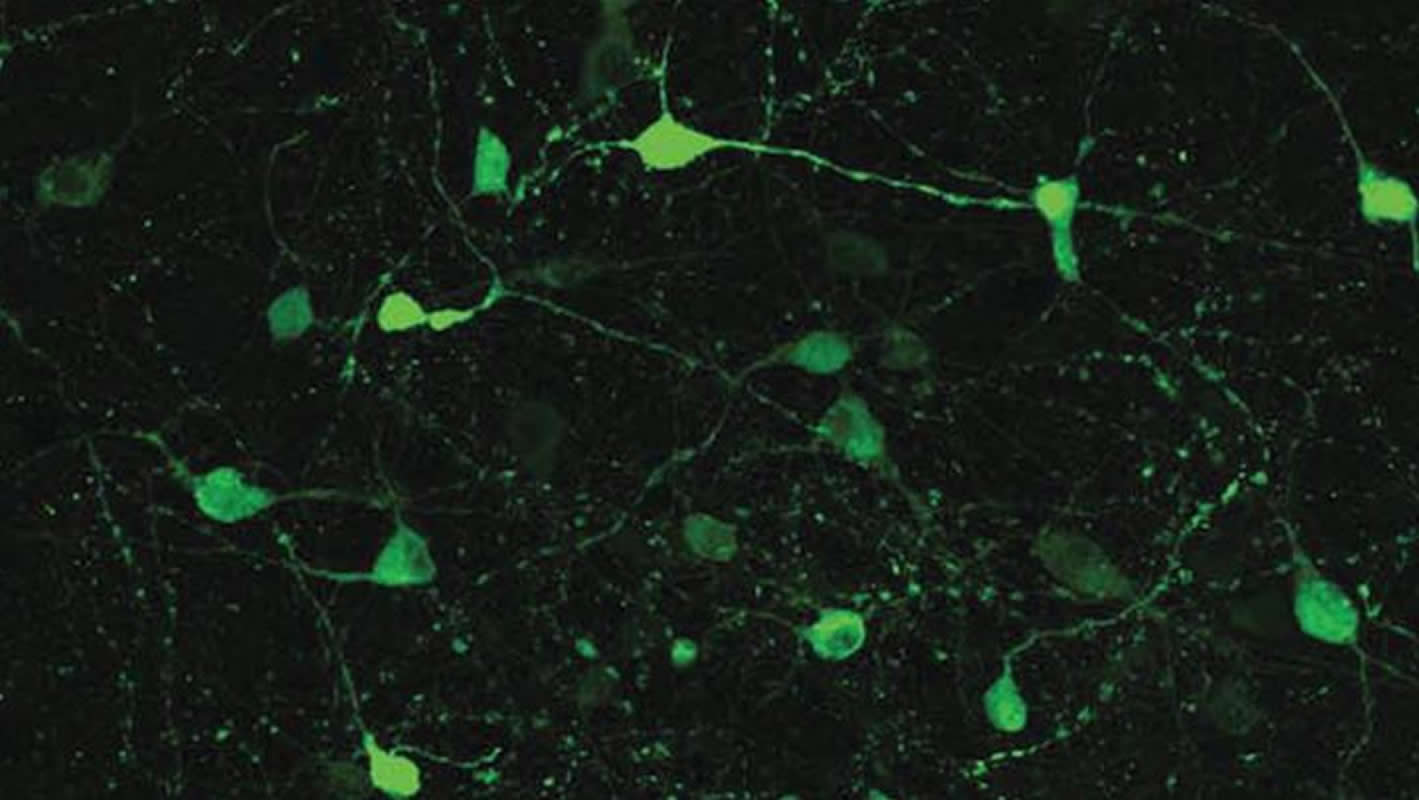Summary: Newly identified network in the hypothalamus alters feeding behaviors on a shorter timescale. The pathway affects food intake and body weight by releasing GABA, which may occur due to the detection, and not the consumption of food.
Source: SfN
A newly identified hunger pathway in the brain can quickly modify food intake in the presence of food, according to a study of mice published in Journal of Neuroscience. This pathway could be a future target for the treatment of eating disorders.
Food intake is modified by long-term signals such as hormones and molecules released during digestion, but a newly recognized circuit in the hypothalamus can change feeding behavior on a shorter timescale. Using fluorescent calcium imaging and electrophysiological recording, Shane Hentges and Andrew Rau at Colorado State University identified a pathway in the hypothalamus that affects food intake and body weight through release of the neurotransmitter GABA, which can occur due to the detection, rather than consumption, of food.

The researchers found that food-deprived mice exhibited more GABA-related neuron activity, indicating that temporary energy states can directly affect feeding behavior. The knowledge of this pathway improves our understanding of how the brain controls energy balance.
Source:
SfN
Media Contacts:
Calli McMurray – SfN
Image Source:
The image is credited to Andrew Rau et al., JNeurosci 2019.
Original Research: Closed access
“GABAergic inputs to POMC neurons originating from the dorsomedial hypothalamus are regulated by energy state”. Andrew R Rau and Shane T Hentgese.
Journal of Neuroscience. doi:10.1523/JNEUROSCI.3193-18.2019
Abstract
GABAergic inputs to POMC neurons originating from the dorsomedial hypothalamus are regulated by energy state
Neuronal circuits regulating hunger and satiety synthesize information encoding the energy state of the animal and translate those signals into motivated behaviors to meet homeostatic needs. Proopiomelanocortin (POMC) neurons in the arcuate nucleus of the hypothalamus are activated by energy surfeits and inhibited by energy deficits. When activated, these cells inhibit food intake and facilitate weight loss. Conversely, decreased activity in POMC cells is associated with increased food intake and obesity. Circulating nutrients and hormones modulate the activity of POMC neurons over protracted periods of time. However, recent work indicates that calcium activity in POMC cells changes in response to food cues on times scales consistent with the rapid actions of amino acid transmitters. Indeed, the frequency of spontaneous inhibitory postsynaptic currents (sIPSCs) onto POMC neurons increases during caloric deficits. However, the afferent brain regions responsible for this inhibitory modulation are currently unknown. Here, through the use of brain region specific deletion of GABA release in both male and female mice we show that neurons in the dorsomedial hypothalamus (DMH) are responsible for the majority of sIPSCs in POMC neurons as well as the fasting-induced increase in sIPSC frequency. Further, the readily releasable pool of GABA vesicles and the release probability of GABA is increased at DMH-to-POMC synapses following an overnight fast. Collectively these data provide evidence that DMH-to-POMC GABA circuitry conveys inhibitory neuromodulation onto POMC cells that is sensitive to the animal’s energy state.
SIGNIFICANCE STATEMENT
Activation of proopiomelanocortin (POMC) cells signals satiety while GABAergic cells in the dorsomedial hypothalamus (DMH) can increase food consumption. However, communication between these cells, particularly in response to changes in metabolic state, is unknown. Here, through targeted deletion DMH GABA release, we show that DMH neurons contribute a significant portion of spontaneously released GABA onto POMC cells and are responsible for increased GABAergic inhibition of POMC cells during fasting, likely mediated through increased release probability of GABA at DMH terminals. These data provide important information about inhibitory modulation of metabolic circuitry and provide a mechanism through which POMC neurons could be inhibited, or disinhibited, rapidly in response to food availability.







